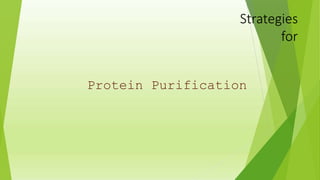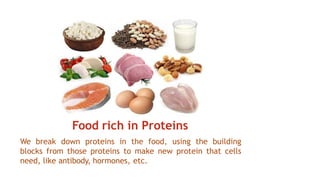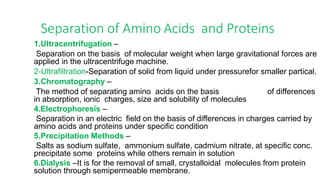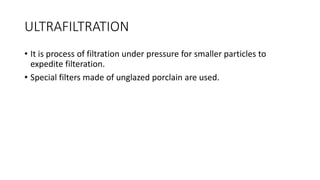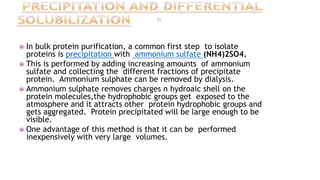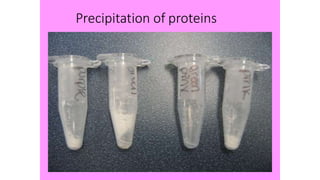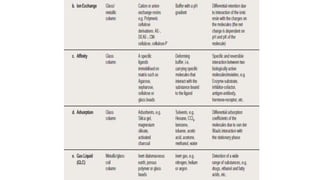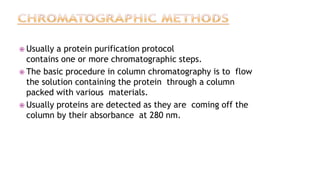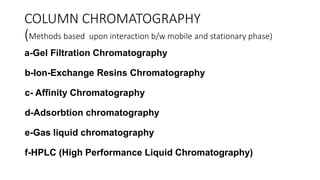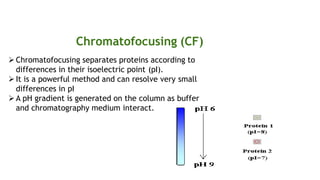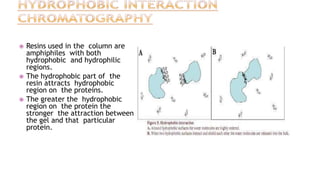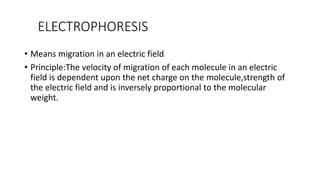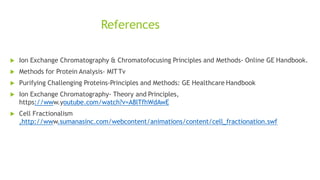Protein purification involves a series of processes to isolate a single type of protein from a complex mixture. The starting material is usually a biological tissue or microbial culture. Various methods are used to separate the protein from non-protein parts and finally separate the desired protein from all others. Key methods include centrifugation, precipitation, chromatography, electrophoresis, and ultrafiltration which separate proteins based on properties like size, charge, and hydrophobicity. The goal is to purify the protein of interest to characterize its structure, function, and interactions.
